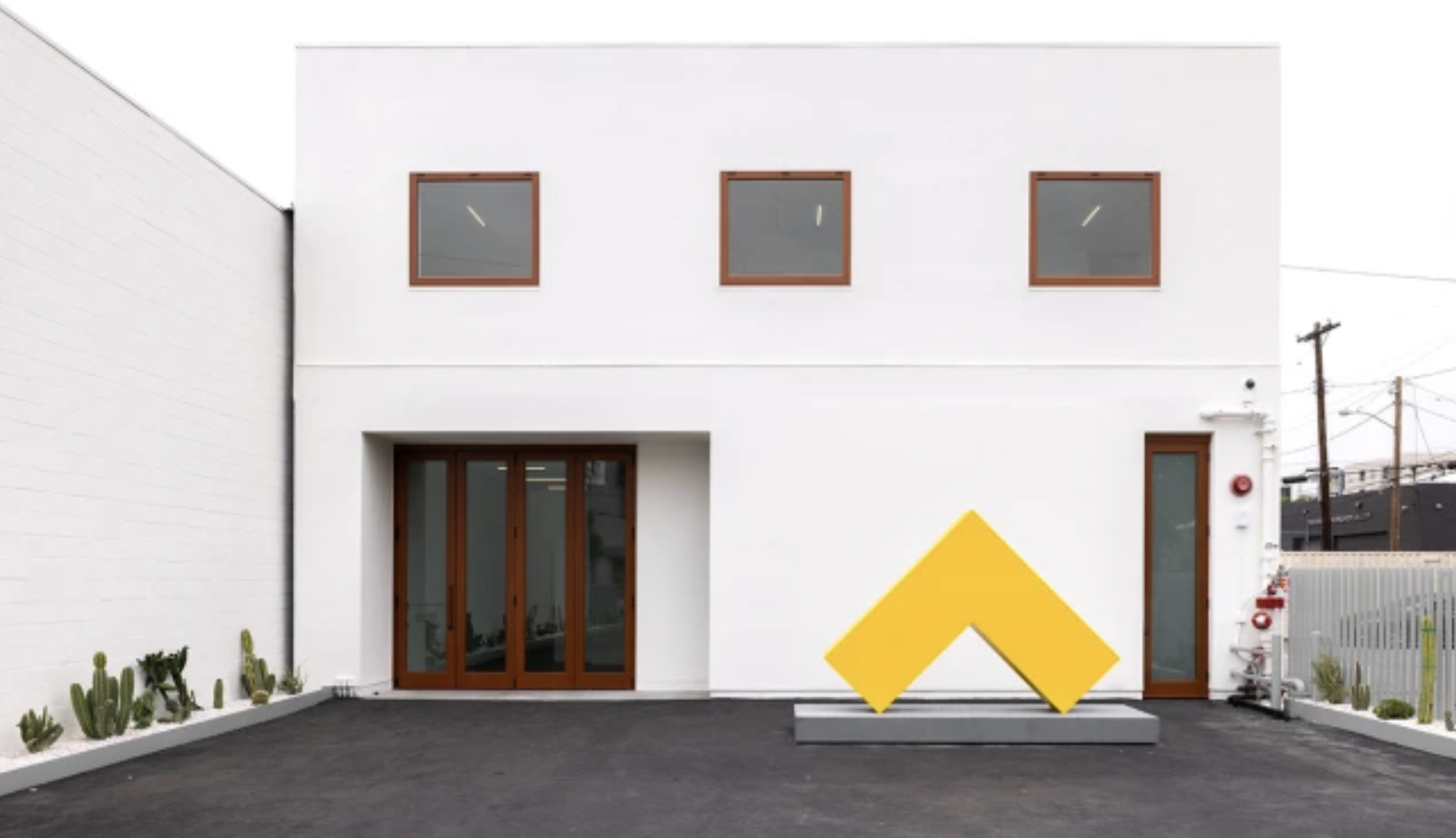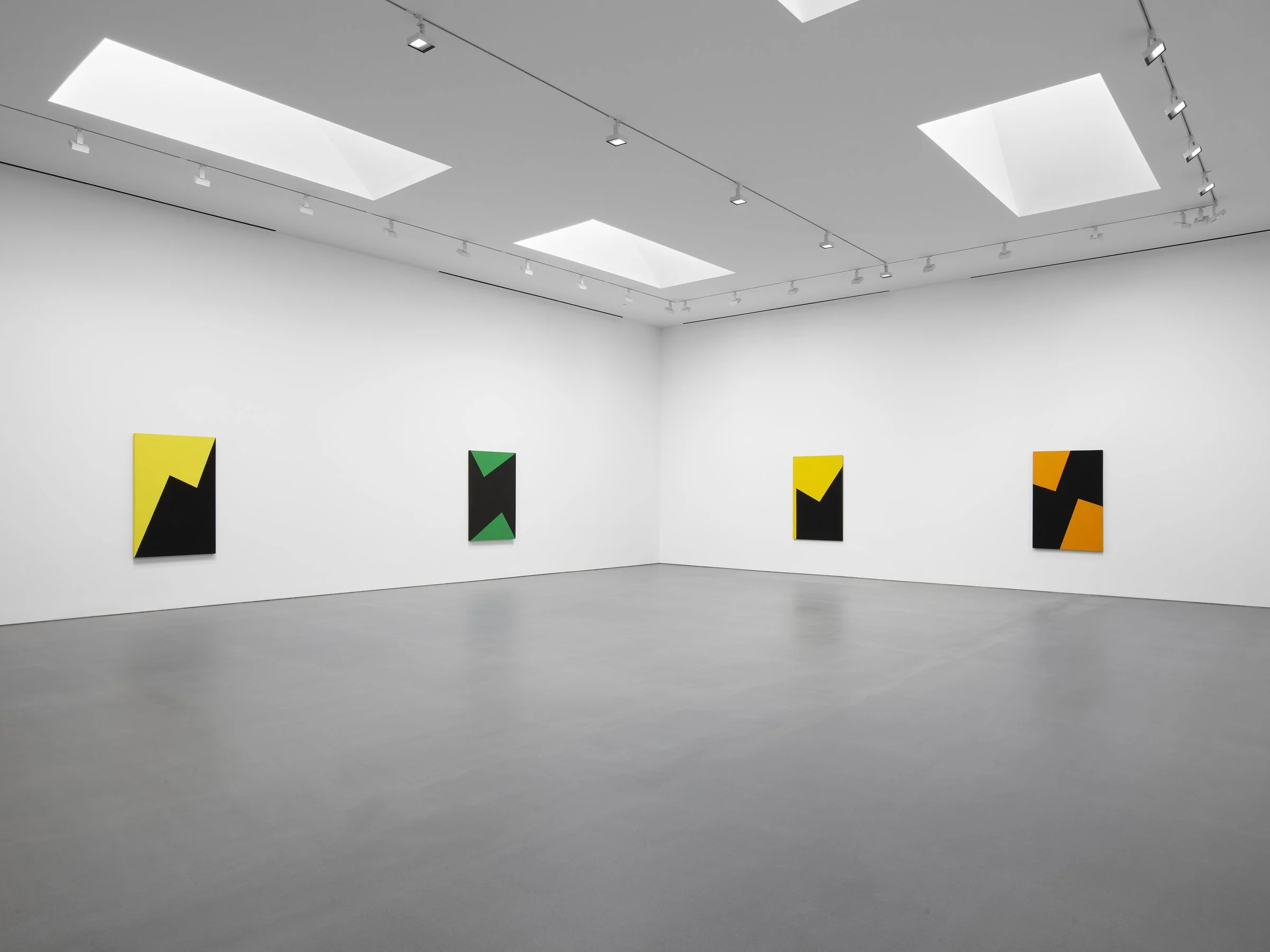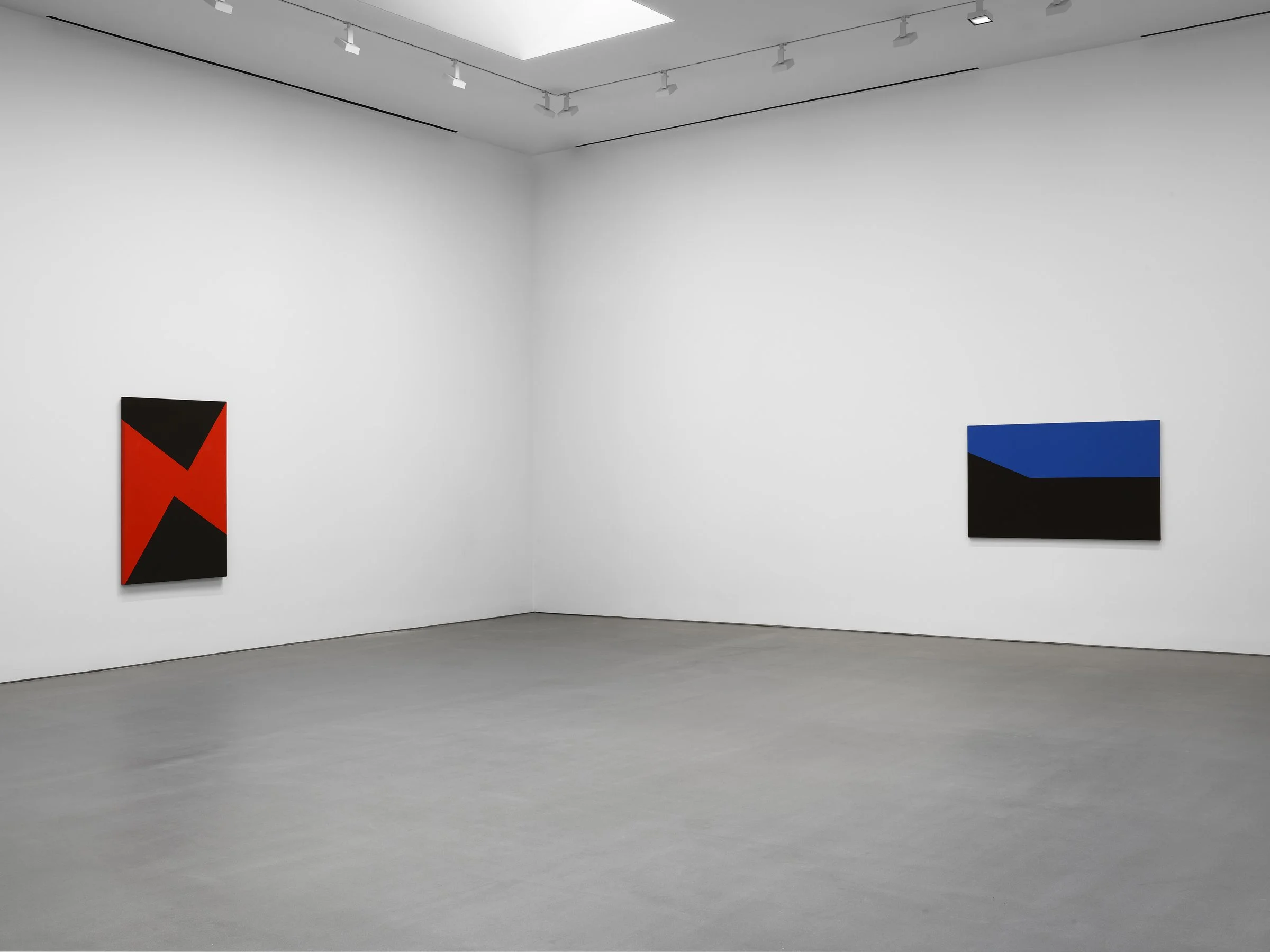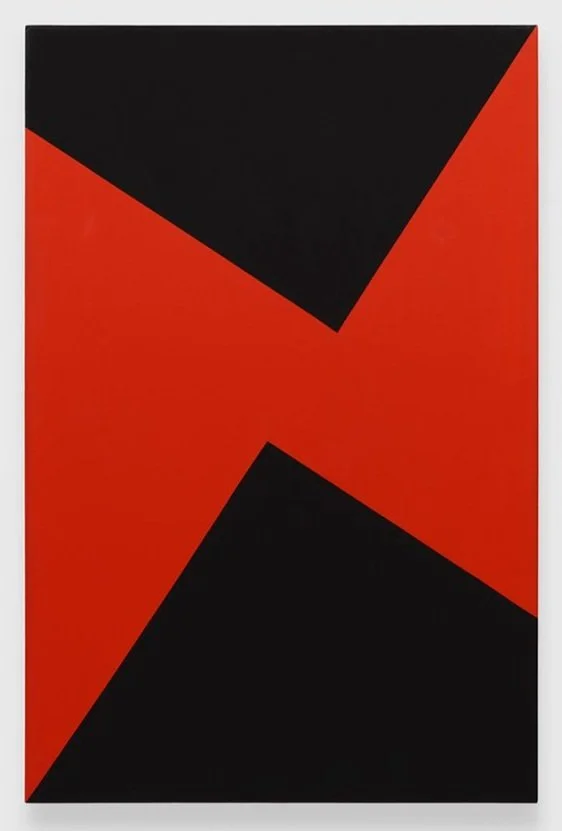‘Carmen Herrera, The 1970’s: Part 2’ | Lisson Gallery
In Lisson’s crisp, freshly-painted white courtyard, an oversize vibrant marigold right angle is flipped upward, balancing precariously on sharp edges, resembling an arrow towards the sky. Greeting and grounding viewers into Carmen Herrera’s artistic world on display in ‘The 1970s: Part 2,’ Lisson’s inaugural Los Angeles show, this is “Angulo Amarillo (2017)” - the sole Estructura piece on display. The playfully scaled sculpture is emblematic of Herrera’s works: something striking that appears so simple at first glance, but unfolds upon further examination.
Angulo Amarillo (2017) | image via Lisson Gallery / Shade Degges
Entering Lisson, the whole show can be consumed in a single sweep. For ‘The 1970s: Part 2’, Lisson brought together a full suite of Herrera’s ‘Days of the Week’ paintings. This series is united by Herrera’s strict use of black within a two-color palette, and the mechanical-straight lines and brutalist angularity of the compositions. The seven pieces are shown in succession, beginning with the aptly titled ‘Blue’ Monday. The only horizontal work, a black plane is inset with a rich cornflower blue trapezoid - or is a blue plane disturbed by a jagged-horizon of deep black? This is the omnipresent tension of the show; it’s an ongoing battle for dominance between opposing colors and emergent forms. In ‘Tuesday’ we wonder if a yellow flash of lightning is striking down, or if a rocky black boulder is emerging from a core?
Image via Lisson Gallery
The works invite (or force) viewers' eyes to adjust, focus, re-adjust, re-focus, in continuum.. Heavy planes recede and expand, but step back, or closer, and the visual balance is dismantled. Color planes are stretched to the edges of the canvas, from which forms emerge and encroach on another. Each large-scale work offers viewers a new opportunity to make sense within this harsh juxtaposition. Her forms play with dimensionality, acting as an optical illusion that architects structured forms in the viewer's eye.
The rest of the week brings in kelly green, nearly-neon orange, and variously muddy shades of yellow, before ending on a (blood-or-candy-apple?) Red Sunday. All juxtaposed against black, lopsided hexagons push against triangles, misshapen trapezoids intersect isosceles triangles - forming erratic but balanced compositions done in perfectly matte swathes of skillfully applied color. The ‘days’ don’t meld meaninglessly into each other, but display singular personalities and are linked only by Herrera’s stylistic and semantic decisions.
Image via Lisson Gallery
The simplicity seemingly exuded in her works is facile: the result of a decades-long practice built on a continuous stripping away.The other core tension lies within the viewer: do not get bored and rush through these. Patience and contemplation are necessary to reap Herreras rewards. In an age of excess, maximalism, and hyper-stimulation, it’s a relief to be reminded how much can be achieved through careful, confident and succinct choices.
Throughout her life, Herrera was steadfast in her visual language, resilient despite the art movements of import that flowed around her. Born in Havana in 1915, Herrera was still painting at age 104, and worked with Lisson on this presentation until her passing last year at 106. It’s Herrera’s wholly unnatural angles and saturated colors that iterate her as a modernist. These works demonstrate a seemingly effortless ability to create energetic movement akin to hectic, industrialized contemporary life purely through an interplay of simple contrast and sharp angles. She predated Minimalism and outlasted Abstract Expressionism, and unrelentingly pushed her reductivist practices – like the decisive shift from a three-color palette to only two. Herrera’s painting’s boldness lies in their simplicity, a clarity that transcends language, politics, and location while also eschewing natural motifs that often unite. Herrera’s paintings could exist in any contemporary space and time.
Sunday (1973) | Image via Lisson Gallery
‘The 1970s: Part 2’ is undoubtedly a distillation of one facet of Herrera’s work, and brought together for the novelty of a ‘full set.’.This presentation eschews other fundamental elements of Herrera’s work, like her daintier compositions and her exceptional utilization of negative space, that might help less-informed viewers situate this specific series of Herrera’s work and lend deeper meaning to the tightened selection. However, as the full oeuvre of Herrera continues to be discovered by the public, Lisson’s show displays a realization that 106 years of life is built day by day, week by week.



